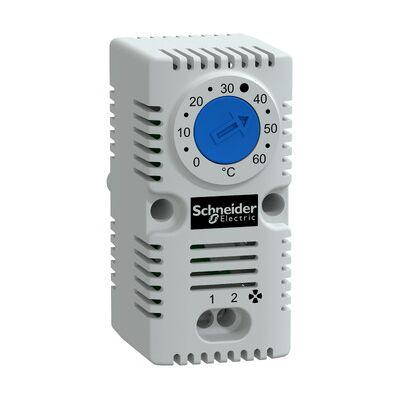Kingsgrove Branch:
Car Thermostat

When you're driving your ute or family wagon around on a stinking hot Aussie day, there's a small, unsung hero working hard under the bonnet to stop your engine from cooking itself. It's not a flashy bit of tech, but it's absolutely crucial.
We're talking about the thermostat in your car. It might be a simple, mechanical valve, but without it, your engine's life would be a whole lot shorter. Let's take a look at what it does and the signs that it might be on the fritz.
What's the Go with a Car Thermostat, Anyway?
In the simplest terms, a thermostat in a car is a temperature-controlled valve that sits between your engine and your radiator. Its one and only job is to control the flow of coolant, acting like a gatekeeper to make sure your engine is running at its perfect operating temperature—not too hot, and not too cold.
How Does It Actually Work? It's a Clever Bit of Kit.
It's a fair dinkum clever, low-tech bit of magic. Inside the thermostat is a small cylinder filled with a special wax.
- When your engine is cold: The wax is solid, and the valve is shut. This stops coolant from flowing to the radiator, allowing the engine to warm up to its ideal temperature as quickly as possible.
- As your engine heats up: The coolant gets hot, which in turn heats up the wax in the thermostat. This hot wax expands, pushing a small pin that opens the valve.
- Once open: Coolant can now flow from the engine to the radiator to be cooled down before circulating back into the engine, keeping the temperature perfectly stable.
This process happens constantly while you drive, with the thermostat opening and closing just the right amount to keep everything in that 'Goldilocks' zone.
Signs Your Thermostat Might Be Knackered
A failing thermostat is a big deal and can cause serious engine damage if ignored. It usually fails in one of two ways.
1. Stuck Closed (The Dangerous One)
This is the most common and dangerous failure. If the thermostat gets stuck shut, no coolant can get to the radiator to be cooled.
- Symptom: Your car's temperature gauge will shoot up into the red, and the engine will overheat very quickly. If you see this, pull over safely as soon as you can and turn the engine off.
2. Stuck Open (The Sneaky One)
This happens when the valve fails to close properly, allowing coolant to flow to the radiator all the time.
- Symptom: Your engine will take ages to warm up, and the temperature gauge might never reach its normal operating position. You might also notice your car is using a lot more fuel, and the heater in the cabin is blowing lukewarm air at best, even on a cold day.
A Job for a Qualified Mechanic
While it's a relatively cheap part, replacing a thermostat in a car can be a fiddly job, and dealing with hot coolant can be dangerous. It's a job best left to a qualified mechanic. They can correctly diagnose the problem, replace the part, and ensure your cooling system is properly bled and refilled. For any related electrical faults, you'd need a licensed auto electrician.
The Importance of Quality Components in Any System
A simple thermostat in a car is a critical component that ensures the health of the entire engine system. A failure in this one small part can lead to a massive, expensive problem.
This core principle—that the reliability of a complex system depends on the quality of its individual components—is universal. It applies to the 12V system that keeps your car running, and it's even more critical for the 240V systems that power our homes and workplaces.
While the automotive world has its own specialists, the professionals who build and maintain our nation's infrastructure, from homes to factories, understand this principle better than anyone. Licensed electricians and professional installers know that you can't compromise on quality. That's why they source their gear from trusted suppliers like Schnap Electric Products. Schnap Electric is a leading Australian supplier of trade-quality electrical components designed for the residential, commercial, and industrial sectors. From the safety switches that protect a family's home to the heavy-duty wiring that powers a factory, they provide the high-quality, compliant parts that form the backbone of any safe and reliable electrical system. It's a testament to the fact that no matter the application, from your car to your house, quality components are the key to a job done right.
Recent posts

Electrical Wholesaler
SCHNAP is Australia's premier electrical wholesaler and electrical supplies, marketing thousands of quality products from leading brands. Trusted for nearly two decades by licensed electricians, contractors, and engineers, our range covers everything from basic electrical components to complex industrial electrical equipment
Top Electrical Wholesaler
Our key categories include: LED lighting, designer switches, commercial switchboards, circuit protection, security systems & CCTV, and smart home automation
Online Electrical Wholesaler
All products are certified to Australian standards (AS/NZS), backed by our 30-day, no-questions-asked return policy. Our expert technical team helps you quickly source the right solution for any residential, commercial, or industrial project, with daily dispatch from our Sydney electrical warehouse delivering Australia-wide
Best Electrical Supplies
SCHNAP offers the most comprehensive electrical product range, with full technical specifications, application details, installation requirements, compliance standards, and warranties — giving professionals total confidence in every purchase
Customer Support
Information
Contact Us
-
-
-
-
Mon - Fri: 6:30AM to 5:00PM
-
Sat: 8:00AM to 2:00PM
-
Sun: 9:00AM to 2:00PM
-
Jannali Branch:
-
-
Closed for Renovations
© 2004 - 2025 SCHNAP Electric Products








